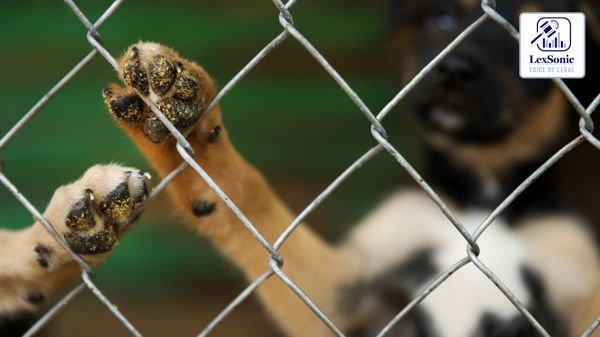Supreme Court’s Nationwide Mandate on Stray Dog Management: Balancing Animal Welfare and Public Safety.
07 November 2025
Animal Protection Laws >> Environmental Law
The three-part order reflects the multi-faceted approach of the Court to the issue-setting out compliance with previous directions, reiterating the responsibility of State agencies for keeping stray cattle off the highways, and laying down an unprecedented array of guidelines for stray dogs in institutional areas: schools, hospitals, sports premises, terminals, and railway stations.

Compliance by States and Union Territories:
The Supreme Court, taking note of these inadequacies, asked all States and Union Territories to file further affidavits indicating the particular steps taken to remedy the deficiencies pointed out above. It warned that any further inertia or non-compliance will invite serious consequences.
Controlling stray cattle on highways:
Reiterating the directions passed by the Rajasthan High Court, the Court directed that municipal bodies, public works departments, transport departments, and the National Highways Authority of India shall jointly identify and clear all stretches of highways which are prone to stray animal movement. Stray cattle picked up from roads would have to be shifted to shelter or gaushalas and provided adequate nutrition and veterinary health care.
Securing Institutional Areas: A Public Safety Imperative
The Court then undertook a deep analysis where it traced the evolution of animal control policies in India under the Prevention of Cruelty to Animals Act, 1960; and the Animal Birth Control Rules, 2001, as amended in 2023. While reaffirming the humane foundation of the Capture–Sterilise–Vaccinate–Release (CSVR) model, the Court lamented the poor execution of these mandates and their limited impact on public safety.
Key Directions Issued:
The Court thus framed a set of all-India directions meant to establish institutional safety:
- All the States and Union Territories shall, within a period of two weeks, identify every school, hospital, sports complex, bus terminal, and railway station within their jurisdiction through municipal bodies.
- The process of fencing, securing the premises, and ensuring that gates or barriers are erected to avoid the ingress of stray dogs will be supervised by the District Magistrates.
- Every identified institution has to designate a nodal officer in charge of the campus's safety and sanitation and has to display contact information at the entrance and inform the municipal authority about it.
- It is hereby ordered that municipal bodies shall carry out quarterly inspections of all such institutions and remove any stray dogs found within the premises for humane relocation to shelters after sterilisation and vaccination, specifically prohibiting their release back to the same location.
- The hospitals should always have an adequate stock of anti-rabies vaccines and immunoglobulins.
- The educational institutions should include sessions of animal awareness and first-aid training in their curriculum.
The Animal Welfare Board of India has to prepare the detailed Standard Operating Procedures with specific uniform preventive and administrative measures for all States and Union Territories within four weeks.
A Step Toward Balance:
The judgment is essentially a reflection of the Supreme Court's sustained effort to balance commitment to the spirit of compassion towards animals and the right to safety and dignity of citizens. It underlines the fact that animal welfare and human welfare are not mutually exclusive but should coexist through effective governance, civic responsibility, and empathy guided by the rule of law.
While imposing accountability at every administrative level, right from local municipal officers to the Chief Secretaries of States, the Court has thus transformed what was long regarded as a municipal nuisance into an issue of national public importance.
At a time when India is grappling with rising numbers of stray animals and dog-bite cases, the decision marks a decisive attempt to harmonize welfare obligations with the constitutional promise of safety and public health. If implemented in letter and spirit, the order could well serve as a blueprint for humane and effective animal management across the country.
